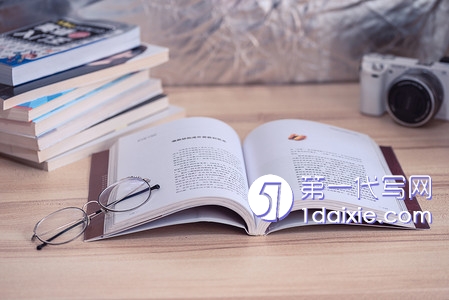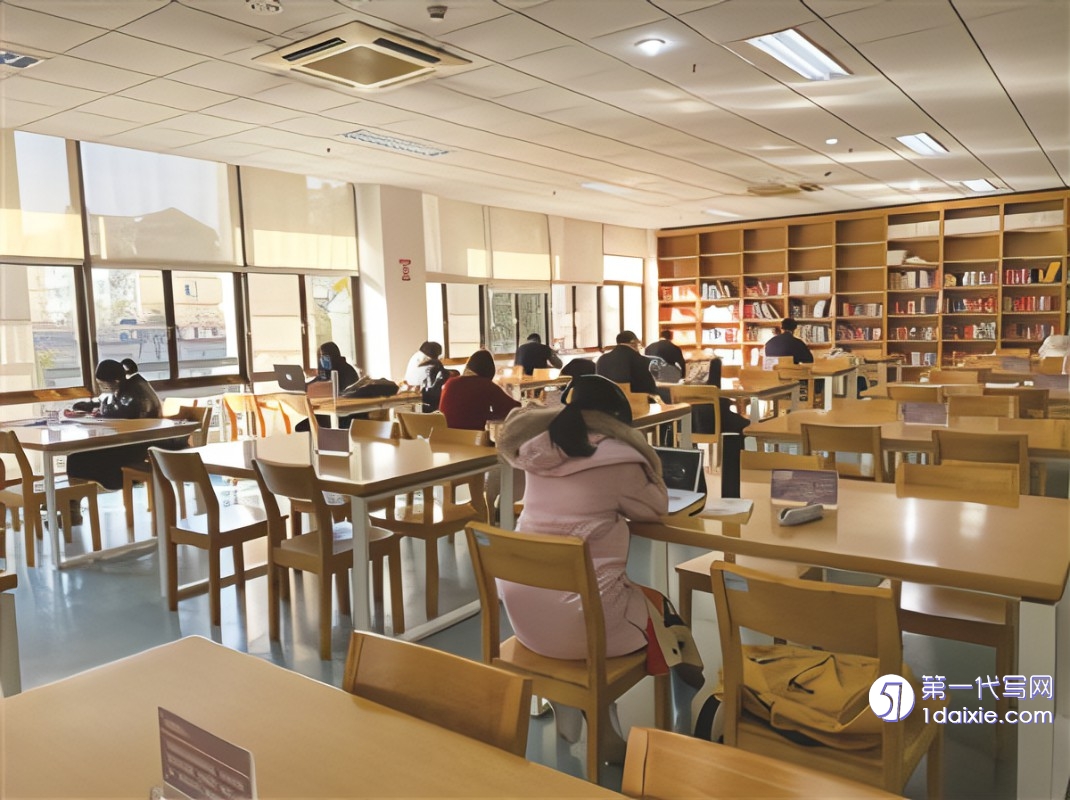本文是教育专业的留学生Essay范例,题目是“Inclusion Strategies in Education for Children with Disabilities(残疾儿童教育的包容策略)”。所有的孩子都应该肩并肩成长,互相学习。所有的学生都应该得到最少限制的环境。他们应该花尽可能多的时间和没有接受特殊教育的同龄人在一起。自1990年《个人残疾和教育法》(IDEA)以来,这已成为法律(特恩布尔,2020年)。术语“严重发育障碍”是一个总称,指的是患有自闭症、严重智力障碍和多重残疾的个体的残疾(Browder, Wood, Thompson, & Ribuffo, 2014)。
All children deserve to grow up side-by-side and learn from each other. All students deserve the Least Restrictive Environment (LRE). They should spend as much time as possible with peers who do not receive special education. This has been made a law since the Individual Disabilities and Education Act (IDEA) of 1990 (Turnbull, 2020). The term “severe developmental disabilities” is an umbrella term to refer to the disabilities of individuals with autism, severe intellectual disabilities, and multiple disabilities (Browder, Wood, Thompson, & Ribuffo, 2014).

The inclusion of students with severe disabilities has many benefits to the individual student and the general student population. It may present some difficulties for the general education teacher, but with supports in place, it is very doable and makes for a better society for all. Several evidence-based studies have highlighted the positive impact of inclusion, comprising of a generalized design for learning, peer mentorship, and a multi-leveled support system. One of the most impactful methods for inclusion and education is the methodology developed by Dr. Maria Montessori. Dr. Montessori began her method of education in 1906 with young school-aged children with multiple disabilities residing in Italian institutions.
接纳有严重残疾的学生对学生个人和学生群体都有许多好处。这可能会给普通教育教师带来一些困难,但有了适当的支持,这是非常可行的,并为所有人创造一个更好的社会。一些循证研究强调了包容的积极影响,包括学习的广义设计、同伴指导和多层次的支持系统。最具影响力的包容和教育方法之一是玛丽亚·蒙台梭利博士开发的方法论。1906年,蒙台梭利博士开始了她的教育方法,对象是居住在意大利机构中的患有多种残疾的学龄儿童。
She designed hands-on learning materials to help students with disabilities learn concepts and skills. When tested, these students with special needs outscored typically-developing children who were educated in traditional public schools (Danner et al, 2015). She developed the “Casa De Bambini”, the children’s house, with materials sized for children and used the scientific method to observe the children and provide the best prepared environment to encourage learning. The language was not developed at the time, but Dr. Montessori was developing universal design lessons accessible to all students.
While this paper has many resources from Montessori classroom research, the policies can be applied to all classrooms, as the benefits do not stop at the schoolroom door. Inclusion may start in the classroom but follows out to society in general. The classroom is the first community for students beyond the family, including people who learn and think differently generates a well-rounded community.
What does inclusion look like? It is often broken into three levels, physical, functional and social inclusion.
Physical inclusion is having access to the same space, being able to get in the building with ramps, wider doors for wheelchairs, possibly seating accommodations. Inclusion starts with a physical presence in the classroom, but it does not end there. Functional inclusion has students functioning at the same level. This is the day to day tasks, being able to pick out what they may want for lunch or which book to read, hanging up their own coat if possible, making self-informed choices about their body. Social inclusion focuses on students forming connections and making friends in efforts to understand the goals of functioning within society in general. This provides greater opportunities in the future (Shanks, 2014). We need people, organizations, foundations, and corporations at state and city levels that are committed to working together to achieve greater inclusivity.
物理包容性是能够进入相同的空间,能够通过坡道进入建筑,更宽的轮椅门,可能的座位设施。包容始于课堂上的实际存在,但并不止于此。功能包容使学生的功能处于同一水平。这是每天的任务,能够挑选他们可能想吃的午餐或读哪本书,如果可能的话挂上自己的外套,对自己的身体做出自我判断的选择。社会包容的重点是学生建立联系和交朋友,努力理解在社会中正常运作的目标。这为未来提供了更大的机会(Shanks, 2014)。我们需要州和市两级的个人、组织、基金会和公司致力于共同努力,实现更大的包容性。
It’s not about people adapting to a normal level or fitting into an existing structure. Rather, inclusion requires a comprehensive reorganization of structures, institutions, and practices. Inclusion means in school, at work, in neighborhoods, in politics; in short, in all areas of life. Only when society is truly inclusive, will people with disabilities, like all people, be able to enjoy their human rights and guaranteed freedoms (Dattke, 2014). Dating back to some of the earliest teaching strategies for students with severe disabilities, educators have emphasized specific skills that are required to meet a criterion of “ultimate functioning” for their students. This is done as productively and independently as possible in inclusive environments. The criterion of ultimate functioning also includes teaching students to direct their own lives. Experts emphasize the importance of teaching students skills like self-management, goal setting, and choice making (Browder et al, 2014).
“The key to an appropriate special education is individualization, such as tailoring a student’s education to build on strengths and meet learning needs. Educators individualize by developing an individualized education program (IEP) for each student ages 3 through 21” (Turnbull, 2020 p. 16). IEPs are one of the services granted for all students with disabilities because of the IDEA laws. IEP goals in all classrooms aim to bring a child from their present level of performance to future independence. Dr. Montessori captured the aim of IEPs perfectly in her book, From Childhood to Adolescence. She states her vision of the future is “of individuals passing from one stage of independence to a higher [one], by means of their own activity through their own effort of will, which constitutes the inner evolution of the individual.”
“适当的特殊教育的关键是个性化,比如根据学生的优势和学习需求量身定制教育。教育者通过为3到21岁的每个学生制定个性化教育计划(IEP)来实现个性化”(特恩布尔,2020年第16页)。由于IDEA法律,iep是授予所有残疾学生的服务之一。所有教室的IEP目标都是为了让孩子从目前的表现水平发展到未来的独立。蒙特梭利博士在她的书《从童年到青春期》中完美地抓住了iep的目标。她说,她对未来的展望是“个人通过自己的活动,通过自己的意志努力,从独立的一个阶段过渡到更高的阶段,这构成了个人的内在进化。”
One of the key distinctions of a Montessori classroom is integrated multi-age classrooms. This facilitates students of multiple levels and learning styles into classroom cohorts regardless of functional ability such as verbal skills or toileting. This would also apply to students with disabilities. Ages are broken into three-year groups, 0-3 are infants, 3-6 are primary classrooms, and 6-9 and 9-12 represent elementary classrooms. These age groups are most typical for Montessori classrooms in the United States. However, Dr. Montessori’s methods were intended from ages 0-21, which align well with IDEA law-mandated transition plans for students with disabilities. She focused on a prepared environment for future success in adulthood. Young adults aged 18-24 are “preparing themselves for [their] place on earth. They are sustaining and expanding their culture, developing leadership abilities with the goal of becoming responsible, contributing members of society” (Montessori Philosophy).

These mixed-age (and ability) classrooms allow children to interact with peers both above and below them in level, which facilitates learning via “the zone of proximal development,” a concept developed by Lev Vygotsky (McLeod 2019). Peer tutoring as an instructional strategy has a strong body of evidence suggesting academic and social benefits for both the tutor and the tutee (Browder et al, 2014). A dissertation study by Hudson (2012) demonstrated that students with intellectual disabilities could also increase correct responses to comprehension questions in a read-aloud conducted by peers who were non-disabled in a general education class.
这些混合年龄(和能力)的教室允许孩子们与高于或低于他们水平的同龄人互动,这有助于通过“最近发展区”学习,这是Lev Vygotsky (McLeod 2019)提出的一个概念。有大量证据表明,同伴辅导作为一种教学策略,对导师和学员都有学术和社会效益(Browder et al, 2014)。Hudson(2012)的一篇论文研究表明,在通识教育课上,由非残疾的同龄人进行的大声朗读中,智障学生对理解问题的正确反应也会增加。
The general education classroom also benefits from including students with special needs. All students have the opportunity to learn how to better interact socially. They develop diverse friendships and learn to accept individual differences as normal, from an early age. They get the chance to realize that people with disabilities are not that different from themselves and are a valuable part of society and the classroom. Inclusive classrooms, when representative of the general population, can mirror quality life interaction skills. If a child with disabilities has trouble communicating or a different communication style, this is a learning opportunity for the entire classroom community, teaching basic signs, how to use alternative or computer-aided devices, or communicating via expressions and sight cards. “Skilled social facilitators know how to support not only social interactions, but also communication and emotional bonds. They also know when to fade out of an interaction between children to allow them to interact on their own” (Shanks, 2014). Having students of all abilities in a classroom also helps children learn that personality traits are different from symptoms of a disability. “It is not that the children are unaware of the disabling conditions, but rather that their interactions and thoughts do not reflect value judgments about individual worth or right to be a part of the classroom community“ (Shanks, 2014).
One of the key functions of classrooms is embedded learning opportunities, or ELO. These opportunities represent in-context learning, skills that are applicable to generalization, and help them to follow an interest. Some classrooms focus on “learn, then do” tasks, but ELO is about learning while doing. When children have questions while doing activities, these questions represent the perfect moment the child is wanting to learn something. “Although teacher-delivered systematic instruction is highly effective, students with severe disabilities should also be provided with opportunities for self-directed learning so that they gain greater autonomy. Two strategies with strong research evidence for promoting self-directed learning are pictorial self-instruction and the Self-Determined Learning Model of Instruction (SDLMI). Directed inquiry, which has a moderate evidence base, is a recent strategy used to promote academic learning (Browder et al, 2014).”
课堂的关键功能之一是嵌入式学习机会,简称ELO。这些机会代表了情境学习,适用于泛化的技能,并帮助他们追随兴趣。有些教室注重“先学后做”的任务,但ELO是边做边学。当孩子在做活动时有问题时,这些问题代表着孩子想要学习的完美时刻。“尽管教师的系统指导非常有效,但也应该为严重残疾的学生提供自主学习的机会,使他们获得更大的自主权。在促进自主学习方面,有两种策略得到了强有力的研究证据,一种是图示式自学,另一种是自主学习教学模式(SDLMI)。定向探究具有适度的证据基础,是最近用于促进学术学习的一种策略(Browder et al, 2014)。”
When focusing on an inclusive classroom, teachers need support. Depending on the level of ability for students with severe disabilities, support will range. Sometimes it is sufficient for an aide art time or for certain subjects, other times a student may require an one-to-one paraprofessional. The important thing is that a teacher is not responsible for student success on their own. They need the support of aids, councilors, school administration, parents and the community.
One example of the beautiful community support is that from young ages students may take field trips to local grocery stores, libraries, banks, and other community centers. These trips promote skills students will need as adults. As is hopefully evident, there are many ways to support students, with research done on evidenced-based practices for children with severe disabilities. Students’ success is greatly improved by inclusion practices, universal learning, peer education,multi-tier and multi-level learning and supports being properly incorporated into and normalized in classrooms.
良好的社区支持的一个例子是,学生从很小的时候就可以到当地的杂货店、图书馆、银行和其他社区中心实地考察。这些旅行提升了学生成年后需要的技能。正如希望看到的那样,有许多方法来支持学生,对严重残疾儿童的循证实践进行了研究。通过包容实践、全民学习、同伴教育、多层次和多层次的学习,以及在课堂中适当融入和正常化的支持,学生的成功得到了极大的提高。
留学生Essay相关专业范文素材资料,尽在本网,可以随时查阅参考。本站也提供多国留学生课程作业写作指导服务,如有需要可咨询本平台。
